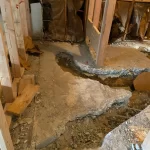When it comes to building homes in rural America, you need more than just hammers and hard hats—you need smart financing. That’s where USDA 515 and 538 loans come in. These loan programs are a financial backbone for rural developers looking to make a real impact. But what if you could stretch those dollars even further? That’s where affordable housing tax credits, HUD resources, and clever financing strategies can seriously boost your budget. When combined properly, these funding tools can unlock better developments, support rural multifamily housing, and serve seniors, workers, and families alike.
This blog will break it all down, so you can learn how to blend USDA 515 and 538 loans with tax credits and HUD funding like a pro.
What Are USDA 515 and 538 Loans?
Let’s start with the basics. Both USDA 515 and 538 loans are part of USDA housing programs designed to support rural affordable housing. But they serve different sides of the financing table:
- Section 515 Loan: This is a direct loan from USDA Rural Development. It’s intended for nonprofits, public agencies, and some for-profits developing low-income rural housing. You’ll see it used to build or rehab properties that stay affordable for decades.
- Section 538 Loan: This one is a loan guarantee—USDA backs loans made by private lenders. It’s less restrictive but still aimed at multifamily loan programs that benefit lower-income tenants.
In short, USDA 515 and 538 loans offer a flexible way to fund development and encourage long-term affordability in rural areas.
How Tax Credits Work in Affordable Housing
Now let’s bring affordable housing tax credits into the mix. The Low-Income Housing Tax Credit (LIHTC) is the go-to tool here. Managed under IRS Section 42, LIHTC allows investors to claim tax credits in exchange for funding affordable housing.
Here’s how it works:
- Developers apply for credits through state housing finance agencies.
- Investors provide upfront equity in exchange for those credits.
- Properties must stay affordable for at least 15 years, often longer.
When paired with LIHTC rural development goals, these credits offer real muscle to your project’s financing structure.
Blending USDA Loans with Tax Credits
Want to get the most bang for your buck? Here’s how to stack the deck by blending USDA 515 and 538 loans, LIHTC, and HUD blended financing:
1. Start with a Solid Site and Plan
You’ll need zoning approvals and clear project goals for the type of rural multifamily housing you plan to build (think senior housing or mixed-income properties).
2. Apply for USDA Loan Funding
Choose the right mix:
- Use a Section 515 loan for direct funding.
- Pair it with a Section 538 loan if you want a lender involved.
3. Layer in LIHTC Equity
Apply for tax credits—either 4% (non-competitive) or 9% (competitive). Use this equity to reduce the debt burden.
4. Utilize HUD Programs
Look into HUD blended financing options like HOME funds or project-based Section 8 vouchers. These can further stabilize your income stream.
5. Execute the Blend
Use a combination of loan proceeds, equity, and grants to fully fund your build. The magic happens when these sources fill each other’s gaps.
This is classic blended housing finance—a strategic combo that’s more powerful than any one funding stream alone.
Compliance and Spending Guidelines
Once funded, you can’t just toss the money around. Both USDA 515 and 538 loans and affordable housing tax credits come with strings:
- Tax credit compliance requires that units be rented to qualified tenants at controlled rents.
- USDA funds often include stipulations for building materials, contractor oversight, and income certifications.
- You’ll need to balance funds across hard costs (construction), soft costs (design/legal), and reserves.
Failing to follow the rules can trigger clawbacks, penalties, or worse, so know your compliance obligations.
Types of Housing That Benefit from This Blend
The combo of USDA 515 and 538 loans with LIHTC rural development and HUD and USDA partnership programs is ideal for:
- Senior Housing: Age-restricted communities with on-site amenities.
- Workforce Housing: Apartments for teachers, nurses, or local workers.
- Mixed-Income Developments: Rural properties offering both affordable and market-rate units.
- Low-Income Rural Housing: Permanent, stable homes for families facing poverty.
These developments address housing shortages while bringing long-term value to rural communities.
Make It Work with the Right Team
To wrap things up: USDA 515 and 538 loans are powerful on their own, but when blended with affordable housing tax credits, HUD blended financing, and LIHTC rural development, you unlock serious financing flexibility. Developers can support long-term affordability, reduce upfront capital risk, and build better communities for the people who need them most.
If you’re ready to explore USDA housing programs, connect with seasoned partners who understand multifamily loan programs, compliance, and housing development subsidies. For expert guidance on structuring a deal that fits your vision, contact us at Midtown Builders. Let’s turn blueprints into homes.










